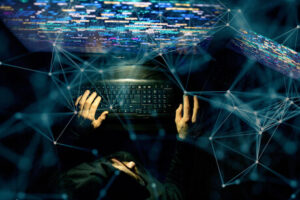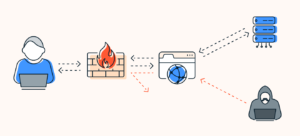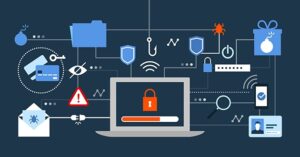In the interconnected digital landscape of the 21st century, the term “cybersecurity” often conjures images of highly skilled IT professionals battling invisible threats behind bank servers or government firewalls. While dedicated security teams are crucial, the truth is that safeguarding our digital world is no longer a task relegated to specialists alone. Cybersecurity is fundamentally everyone’s responsibility.
The sheer ubiquity of technology—from smartphones and smart homes to cloud services and critical infrastructure—means that every individual and organization is a potential entry point for a cyberattack. A single careless action by an employee, a forgotten software update by a user, or a weak password can initiate a chain reaction that compromises not just personal data, but an entire network, business operation, or even national security. This article delves into why this collective responsibility is paramount, the risks of ignoring it, and the practical steps everyone can take to become a strong digital defender.
The Evolution of the Threat Landscape
The need for collective responsibility stems from the rapid evolution of cyber threats. Historically, attacks were often complex, requiring significant technical skill. Today, however, cybercrime has become a sophisticated, industrialized venture.
- Phishing and Social Engineering: Modern attacks frequently bypass technical defenses by exploiting the human element. Phishing emails, deceptive text messages (smishing), and malicious websites prey on human curiosity, urgency, or fear. These social engineering tactics are highly effective, demonstrating that the weakest link is often a person who is unaware or momentarily distracted.
- The Rise of Ransomware: Ransomware has moved from targeting specific individuals to indiscriminately paralyzing entire businesses, hospitals, and municipalities. The initial infection often starts with a single user clicking a malicious link or downloading an infected file. When an organization is crippled, it impacts employees, customers, and the general public.
- The Internet of Things (IoT): Every new connected device—smart thermostats, security cameras, wearable tech—is a potential security vulnerability. These devices often ship with weak default passwords and limited security features, creating easily exploited backdoors into home and corporate networks.
In this environment, cybersecurity is less about building an impenetrable wall and more about creating a resilient, human-powered “security mesh” where every node (person) contributes to the overall strength.
🌐 Cybersecurity in the Workplace: A Business Imperative
For organizations, the concept of shared cybersecurity responsibility is an economic and ethical imperative. A data breach can lead to massive financial losses from regulatory fines, remediation costs, legal fees, and, most damagingly, reputational damage.
- Employees as the First Line of Defense: Employees are not just users of the company network; they are its first, and often last, line of defense. Every staff member must be trained to:
- Recognize Phishing: Being vigilant about unsolicited emails and verifying sender identities.
- Secure Devices: Using strong, unique passwords, multi-factor authentication (MFA), and ensuring work devices are never left unattended.
- Follow Policy: Adhering to organizational policies on data handling, third-party software, and remote work security. A common breach vector is the unauthorized installation of insecure software.
- The BYOD (Bring Your Own Device) Risk: In a world where employees use personal devices for work, the security perimeter extends into the individual’s home network. If a personal laptop or phone is compromised, it can serve as a bridge to infiltrate the corporate system. This demands that companies provide clear guidelines and that employees take personal responsibility for securing their devices, even after hours.
It takes just one person to click a malicious link to compromise an entire company. This reality underscores why security training is not a one-time HR formality but a continuous, engaging educational process.
🏠 Cybersecurity at Home: Protecting Your Digital Life
The boundary between work and personal life has blurred, making personal cybersecurity a critical component of professional security. For individuals, personal responsibility translates into protecting their own digital identity and financial well-being.
- Strong Password Hygiene: The era of simple passwords like “123456” or “password” must end. Individuals must use unique, complex passwords for every account and utilize a password manager to store them securely. This prevents “credential stuffing,” where one leaked password is used to automatically attempt logins on hundreds of other sites.
- Multi-Factor Authentication (MFA): Enabling MFA on all critical accounts (banking, email, social media) is the single most effective defense against unauthorized access. This simple step adds a crucial layer of protection, requiring a second verification method (like a code from a phone) even if the password is stolen.
- Software Updates: Operating systems and applications regularly release security patches to fix vulnerabilities that hackers have discovered. Ignoring these updates leaves a digital “back door” open. Keeping software consistently updated is a non-negotiable personal security practice.
- Be a Smart Consumer: When purchasing an IoT device, individuals have a responsibility to research its security features and change default passwords immediately.
The Economic and Societal Impact
The collective failure to take personal responsibility for cybersecurity has wider societal and economic ramifications:
- Supply Chain Risk: A small, seemingly insignificant vendor with weak security can be the attack vector used to compromise a large corporation or government agency (e.g., the 2020 SolarWinds attack). When everyone prioritizes security, the entire supply chain becomes more robust.
- Erosion of Trust: Successful, high-profile breaches erode public trust in digital services, e-commerce, and even democratic processes. A secured digital environment fosters confidence, which is the foundation of the modern digital economy.
- National Security: Attacks on critical infrastructure—power grids, hospitals, financial systems—can be catastrophic. These attacks often leverage vulnerabilities found in commercial software or unpatched home networks used by employees. In this sense, personal cybersecurity is a small, but vital, contribution to national resilience.
🔑 Conclusion: Shifting the Mindset
Cybersecurity must shift from being viewed as a technical problem solved by IT to a risk management culture championed by everyone. It is not just about technology; it’s about mindfulness, education, and consistent vigilance.
Every time you pause before clicking a link, use a strong, unique password, or take a moment to update your software, you are actively contributing to the collective defense of the digital world. The question is no longer “Are we safe?” but “What am I doing today to make my digital presence and the networks I touch safer?”
When every user, from the CEO to the customer service representative, understands that they are a vital shield, the vast and complex network of the internet becomes far more resilient. Cybersecurity truly becomes everyone’s responsibility, and ultimately, everyone’s benefit.



